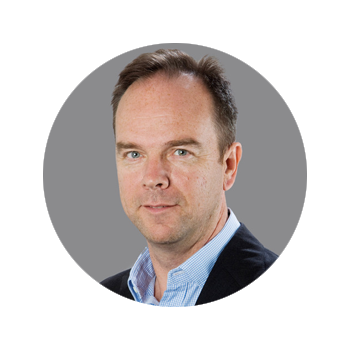"But the thing is, coming into this year, the yield curve was inverted, and that usually presages recession. But it now looks as though the inversion was too early. So the question of portfolio positioning has been confounding many people.
"They came into the year thinking 2022 was bad for equities, bonds and credit, and expected this year to be better, but that hasn’t really happened. And the thing is, as bond yields move to 5 per cent, well, there has to be some collateral damage to other asset classes.”
Bond exposure
Iggo’s view is that the restoration of the old normal scenario of bonds and equities being inversely correlated may become a feature of markets, "and this actually means the average return on a medium-term time horizon from a 60/40 type portfolio has risen markedly".
"It’s possible now that the return from such a portfolio could consistently be 8-10 per cent in the coming years," Iggo notes.
Dan Boardman-Weston, chief investment officer at wealth management firm BRI, says “the potential returns available to investors are more attractive now because fixed income markets have had an horrendous two and half years, so it’s a good starting point.
"I also think that, in terms of a fixed income, I think an investor is being more than compensated for the risks by the yields that are here now."
Dean Cook, a multi-asset investor at Aviva Investors, is similarly positive on government bonds, saying that if an investor “has a 10-year time horizon, then there is no reason to do anything other than buy those. But for other investors, diversification matters”.
Cook continues to expect inflation to fall and move down towards central bank targets by the end of 2024.
Adam Norris, who is part of the multi-manager team at Columbia Threadneedle Investments, says he has been adding duration to the fixed income exposures he has.
At the shorter-end of the curve he owns high yield bond funds, which he feels have the advantage of offering equity-like returns.
He says: “We access these through funds, including the Artemis High-Yield Bond fund. The average duration there is two and a half years. But if you own these to maturity, then it doesn’t really matter about price movements, as price movements are driven by the market's view on interest rates."
Equity exposure
Zurich's Miller says the US economy has diverged from the rest of the world this year, by performing much better, but he is wary of investors declaring the market there a safe haven from the travails of the rest of the world.






